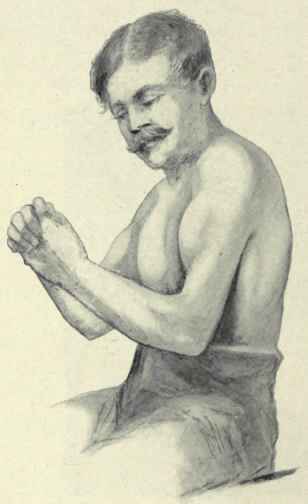The Posterior Or Extensor Set
Description
This section is from the book "Applied Anatomy: The Construction Of The Human Body", by Gwilym G. Davis. Also available from Amazon: Applied anatomy: The construction of the human body.
The Posterior Or Extensor Set
The posterior or extensor set includes the triceps and the subanconeous, when present as a distinct muscle.
The Triceps Muscle
The muscular mass on the posterior surface of the arm is formed solely by the triceps muscle. It arises by three heads and inserts by a single tendon into the olecranon process of the ulna. Its three heads are the long, external, and internal. The long head arises from the lower edge of the glenoid cavity and the scapular border below it for 2.5 cm. (1 in.). It blends with the capsule of the joint and tends to strengthen it at this point. When the arm is abducted, this tendon is closely applied to the capsule and head of the humerus, and when the head escapes in luxation, it slips out anterior to the tendon. The external head arises from the humerus above the musculospiral groove and from the external intermuscular septum; the internal head arises from the humerus below the musculospiral groove and from the internal and the lower part of the external intermuscular septum (Fig. 283).
At its lower end the triceps inserts into the olecranon process, the upper third of the ulna, and the deep fascia of the back of the forearm. The expansion of fascia from the olecranon on the inner side is thin and insignificant, but that on the outer side, on the contrary, is thick and strong, and when fracture of the bone occurs is an important factor in preventing separation of the fragments.

Fig. 282. - Rupture of the lower tendon of the biceps. Contraction of the muscle produces a swelling abnormally high up on the arm. (From a photograph).
Continue to:


